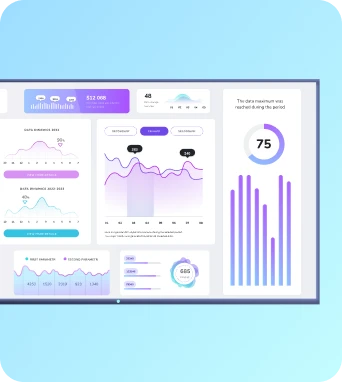Beacon-triggered ads
Beacon-triggered ads are location-aware digital signage messages activated by nearby Bluetooth Low Energy (BLE) beacons. They deliver timely, contextual promotions or information to TV dashboards and displays, enabling zone-based targeting and moment-specific content changes for retail, hospitality, workplace and event environments managed via Fugo.ai.
Beacon-triggered ads
How beacon-triggered ads work
Beacon-triggered ads rely on Bluetooth Low Energy signals emitted by beacons installed at strategic points within a venue. Those beacons broadcast identifiers at regular intervals; receivers such as smartphones, tablets, dedicated gateway devices or signage players detect the identifiers and notify the signage platform. In a Fugo.ai setup the signage player or edge device either receives the beacon signal directly if it has BLE capability or listens to a gateway that relays proximity events. The detected event maps to a trigger rule in Fugo that instructs a specific display to switch to an ad or content template for a defined period. Rules include match conditions such as beacon ID, signal strength thresholds to approximate distance, time windows and campaign priority so that multiple overlapping triggers resolve predictably. A robust implementation includes fallbacks and safeguards. For example, players can revert to default playlists if a trigger is no longer present, or use hysteresis to avoid rapid content flicker when signals fluctuate. Frequency capping prevents repeated impressions for the same passer-by where required, and content can be personalised if paired with a consented mobile app that surfaces user preferences. Administrators manage device provisioning, beacon-to-content mappings and reporting from the Fugo console, giving operational visibility into which triggers fired and how long triggered content ran. This flow keeps advertising contextual, measurable and manageable across many displays.
Use cases and best practices
Beacon-triggered ads are valuable across retail, hospitality, events and workplaces because they create timely relevance. In retail, beacons near product aisles or displays can trigger in-store promotions, product videos or discounts on nearby TV dashboards to influence purchase decisions at the point of interest. In hospitality, beacons in lobbies or conference areas can present welcome messages, directional signage or offers for on-site services. Event organisers use beacons to change digital signage between sessions, highlight sponsors when attendees congregate, or surface session-specific information as people enter rooms. In corporate environments beacons can deliver localised operational alerts, desk booking confirmations on adjacent screens, or safety notices to areas where a risk has been detected. To get consistent results, follow placement and configuration best practices. Position beacons with clear line-of-sight where possible, calibrate transmission power to define zones without excessive overlap, and document beacon IDs and locations. Test for interference from metal structures or dense Wi-Fi deployments and use signal strength thresholds to avoid false triggers. Integrate consent and privacy controls when pairing beacon triggers with identifiable user data, and align data retention with organisational policies and regional regulations such as GDPR. Finally, monitor analytics in Fugo to refine campaigns: measure dwell time, triggered impressions and subsequent engagement, then iterate on content, timing and placement to improve relevance and return.
Integration and deployment considerations
Keep the learning going...
Bandwidth-adaptive media delivery
Bandwidth-adaptive media delivery is a method that dynamically adjusts video and image encoding, resolution and bitrate in response to real-time network conditions. Designed for digital signage and TV dashboards, it preserves playback continuity and brand visuals while minimising stalls, data waste and the need for manual quality overrides across distributed display networks.
Bandwidth-efficient streaming
Bandwidth-efficient streaming is an approach to delivering video and visual content that minimises network load while preserving perceived quality. It uses adaptive bitrate encoding, intelligent caching, local playback and smart delivery strategies to reduce bandwidth consumption on digital signage networks while keeping playback smooth and predictable.
BenQ smart signage displays
BenQ smart signage displays are commercial-grade digital screens built for continuous operation in public and corporate spaces. They combine robust hardware, high-brightness panels, integrated media players and network management features to deliver reliable, easy-to-deploy solutions for retail, education, hospitality and workplace dashboards.



